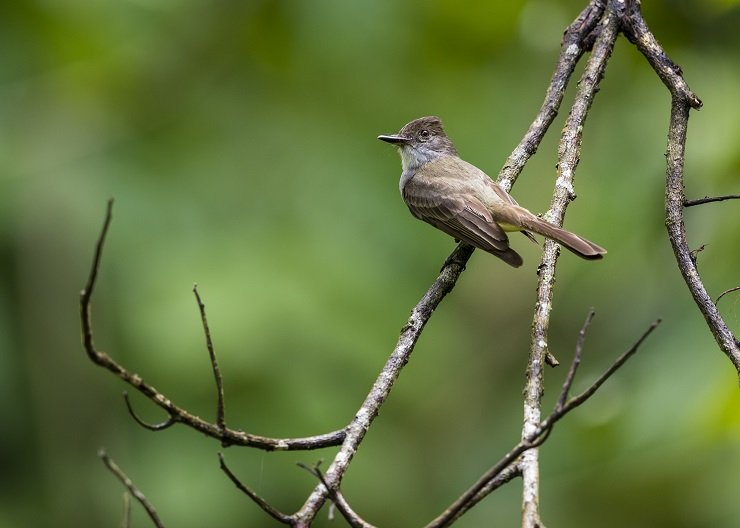
When out birding, I prefer completely wild habitat. There is something about a mature rainforest, for example, that cannot be replicated by any human. Reforested areas may come close, but there is a feeling that weathering the passage of time engenders. Humans have altered their habitat for hundreds of years, creating various new habitats that some aspects of nature have come to colonize.
I enjoy birding in cocoa estates especially – as they retain some of the highest percentage of native biodiversity (as compared to other altered habitats). Specifically, estates which have preserved most of the oldest, largest trees. Shade-grown crops have myriad advantages, and naturally, we’re here for the birds.
Frugivores and insectivores seem to dominate from my perspective. For the purpose of this post being of a reasonable length, I’m only going to touch on members of the Tyrannidae family of New World Flycatchers which can be found in the cocoa estates of Trinidad and Tobago. There are of course, many other birds which feed on flying insects, such as jacamars and trogons.
Flycatchers tend to be confiding subjects for photography, often remaining motionless for an extended period of time. Even when they do fly off, it’s usually in pursuit of a meal. Flight is often brief and the same perches are reused, spaced out relatively evenly across its territory. Many of them vocalize frequently (thankfully), making them fairly easy to locate and identify.
The call of the Yellow-breasted Flycatcher is one of the most ubiquitous in forests across Trinidad and Tobago, but specifically in the cocoa estates of the fertile central belt of Trinidad – one can hardly take ten breaths without hearing the strident vocalization of this tiny bird.

Yellow-breasted Flycatcher

Another very vocal flycatcher is the Tropical Pewee, here with cocoa pods in the background.
Even though they belong to the same family, many flycatchers have different habits. Piratic Flycatchers opt for the exposed upper branches of trees, from which they call loudly throughout the day. Their name is no accident – Piratic Flycatchers closely monitor the nesting activities of pendulous-nesting species like Crested Oropendolas and Yellow-rumped Caciques. Targeting a nest that is just approaching completion, the flycatchers persistently annoy the builders until they eventually abandon the nest. Having successfully claimed ownership of the nest, the Piratic Flycatchers move in, lay and incubate their eggs, and ultimately raise their young in the pirated nest.

Piratic Flycatcher

Much rarer and extremely similar is the Variegated Flycatcher. Subtle differences in facial pattern, presence/absence of rufous on the rump and tail, as well as bill color are key to separating the two in the field.

Streaked Flycatchers have a similar overall coloration but are considerably larger and stockier. Like many members of the family, they are often heard long before they are seen.
At first glance, a Dusky-capped Flycatcher can be mistaken for a Brown-crested Flycatcher or even a Tropical Kingbird – both also residents of the cocoa estates in T&T. But its slight build and unique combination of physical characteristics (not to mention its plaintive call) help in properly identifying it.

Dusky-capped Flycatcher
Another bird that can easily slip past unnoticed is the Boat-billed Flycatcher. Not because it is by any means secretive, however. It bears an uncanny resemblance to the extremely common Great Kiskadee!

The Boat-billed Flycatcher sports a genuinely massive bill, which they use to manipulate large, juicy insects like cicadas.

Note the much thinner bill and more extensive rufous on this Great Kiskadee.
The Tyrannidae family is extensive and I shall not include every single member possible for a random birding jaunt in any of the cocoa estates in T&T. I’ll leave it up to Lady Luck herself if she deems you fit to be awarded a view of a Euler’s Flycatcher or Short-tailed Pygmy-Tyrant when you decide to go birding in Trinidad and Tobago.













Leave a Comment